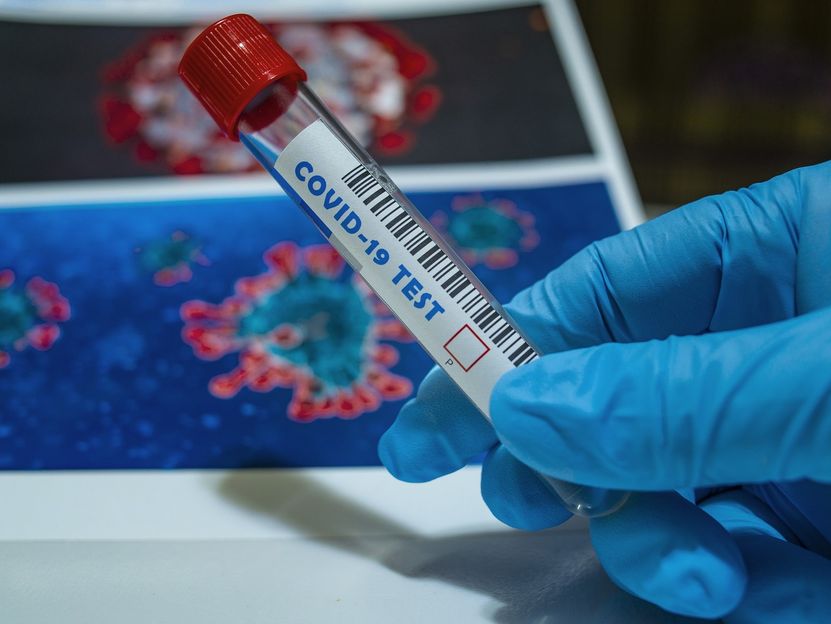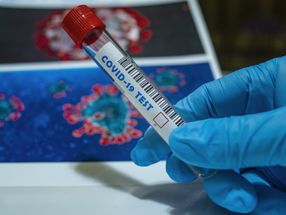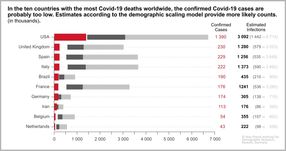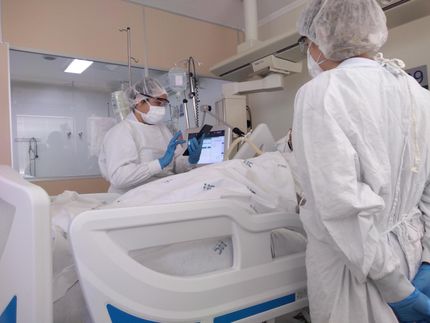How many people actually have Covid-19?
According to a study, the number of undetected cases of infected persons differs significantly in different countries
The demographic scaling model developed by researchers at the Max Planck Institute for Demographic Research in Rostock and University of Helsinki makes it possible to estimate the actual number of Covid-19-infections in different countries with just a minimum of data. According to this model, the number of cases in Germany is only 1.8 times higher than the number of confirmed cases. For Italy, however, the researchers estimate that the number of infected is 6 times higher than the number of confirmed cases reported by the health authorities.

fernandozhiminaicela, pixabay.com, CC0

In all ten countries with the highest number of Covid-19 deaths (as of May 13), the number of infected persons is most likely higher than the number of confirmed cases. If the distance between the red bar (number of confirmed cases) and the dark grey bar (probable estimate) is large, the number of confirmed cases is far from the probable number of infected people.
© Max Planck Institute for demographic Research


"For the ten countries most affected by the Covid-19 pandemic, we used our demographic scaling model to estimate the number of unreported cases of infected people," says Mikko Myrskylä, Director at the Max Planck Institute for demographic Research in Rostock, Germany. According to data from May 13, 2020, there are on average four times as many infected people as there are confirmed cases.
For Italy, the model estimates about 1.4 million infected people which is six times higher than confirmed cases reported by the health authorities. The researchers estimate for the U.S. that there have been 3.1 million people infected with COVID-19, which is more than twice as many cases as officially reported. In Germany, on the other hand, where a large number of people are tested for Covid-19, the model estimates the number of unreported cases to be only 1.8 times as high.
"However, the uncertainty of our model estimates is large," adds Christina Bohk-Ewald, co-author of the paper and currently working at the University of Helsinki. With a probability of 95%, the estimated total number of cases is between twice and eleven times as high as the number of confirmed cases. The differences between the individual countries are also large. The researchers present their model in a paper which is available online as a pre-print version on medRxiv but has not been peer-reviewed.
For their model calculations the researchers mainly used data on Covid-19 deaths, infection fatality rates, and life tables. However, since COVID-19 infection fatality rates are not yet known for most countries, the researchers transferred it from one reference country to other countries using the so-called remaining life expectancy. This demographic parameter allows to control for cross-country differences in the age structure, previous illnesses in the population, and the health care systems of the different countries.
The demographic scaling model is based on two main assumptions: firstly, it assumes that the number of people who have died of Covid-19 is fairly accurately recorded. Secondly, it assumes that the infection fatality rates from a reference country (in this case Hubei, China) are transferable to other countries after demographic adjustment. The three Max Planck researchers are aware that these two assumptions are only approximations and do not apply perfectly everywhere.
Nevertheless, the researchers are convinced that they have developed a widely applicable model which provides useful estimates of the actual number of individuals who are infected with Covid-19, using only minimal input data. "Our model can also be used to check the plausibility of estimated infection numbers from other studies which measure, for example, the prevalence of antibodies in the population," says Christian Dudel. According to Dudel, the antibody tests, which are only carried out regionally, are often not representative for the entire population of a country.























































